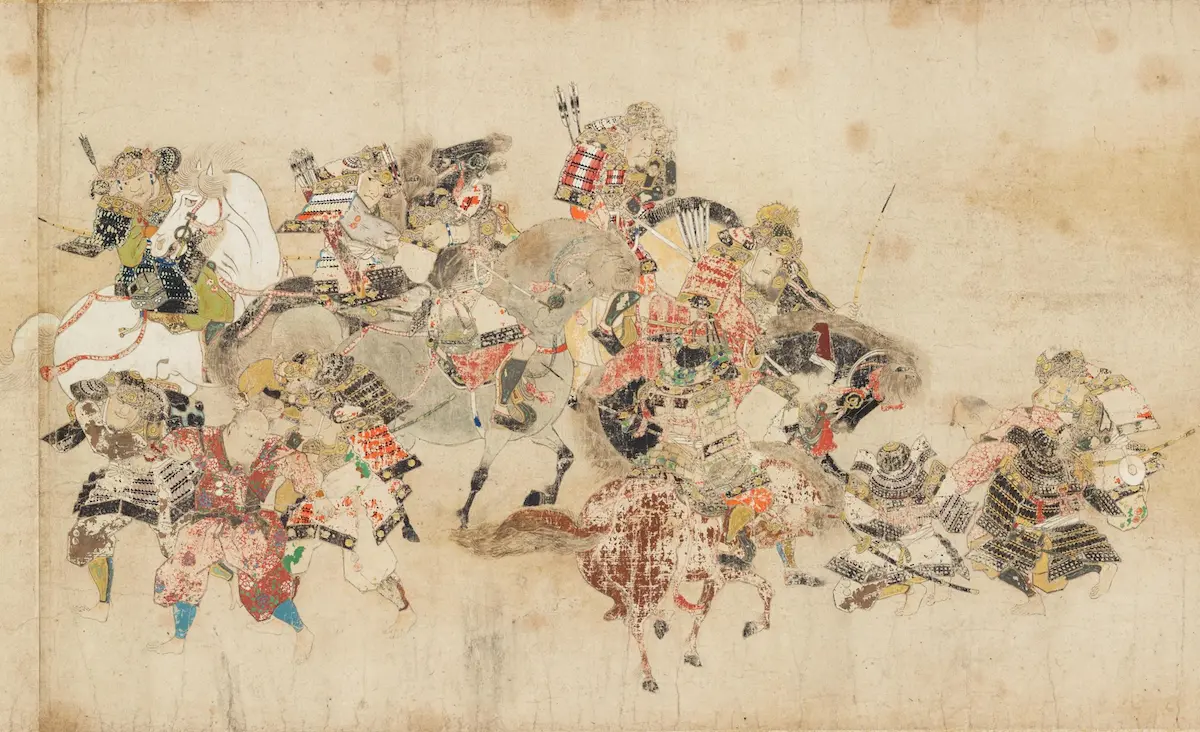The Gosannen War, or the Later Three Years’ War, was a pivotal conflict during the late 1080s in Japan’s Heian Period, primarily in Mutsu Province.
It began with internal disputes within the Kiyohara clan, escalating as Minamoto no Yoshiie intervened, initially as a mediator and later as a combatant. Key battles included the protracted siege of Kanezawa Stockade, showcasing the evolving tactics and courage of the samurai class.
Despite Yoshiie’s military success, the war’s aftermath was marked by his dismissal from governorship and lack of official recognition from the imperial court. Fujiwara no Kiyohira, who allied with Yoshiie, emerged as a significant regional power.
Key Takeaways
- The Gosannen War originated from internal disputes within the Kiyohara clan. It highlights the unstable clan politics during the Heian Period.
- Minamoto no Yoshiie initially acted as a mediator in the conflict. He later became a key combatant, showing the growing role of samurai in politics.
- The siege of Kanezawa Stockade was a major battle of the war. It showcased advanced military strategies and the bravery of the samurai.
- Yoshiie, despite his victories, was dismissed and unrecognized by the imperial court. In contrast, Fujiwara no Kiyohira gained significant power, indicating a shift in political dynamics.
- The war emphasized the rising importance of private armies and the samurai class. This set the stage for the rise of feudal Japan and the weakening of central imperial control.
Prelude to Gosannen War
The Gosannen War, known as the Later Three Years’ War, unfolded during the late 1080s. It was set in Japan’s Mutsu Province, located in the Tōhoku region of Honshū.
The war’s origins can be traced back to internal struggles within the prominent Kiyohara clan. Disputes erupted among Kiyohara no Masahira, Kiyohara no Iehira, and Kiyohara no Narihira, leading to prolonged disturbances.
This clan conflict was rooted in a quest for dominance and control within the region, representing a broader struggle among warrior clans of the era.
Minamoto no Yoshiie, appointed as the Governor of Mutsu province in 1083, played a crucial role in the unfolding events.
Yoshiie, a member of the Kawachi Genji lineage, had a reputation as a skilled warrior, having honed his abilities during the Former Nine Years’ War under the guidance of his father, Minamoto no Yoriyoshi. His intervention in the Kiyohara feud was initially aimed at mediation but eventually led to direct military involvement.
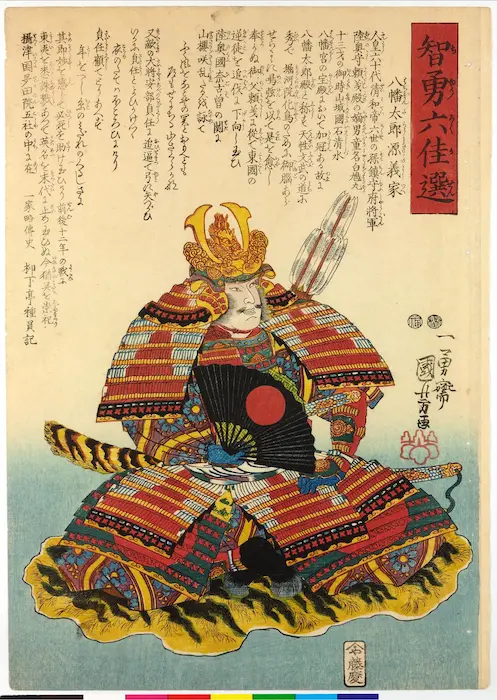
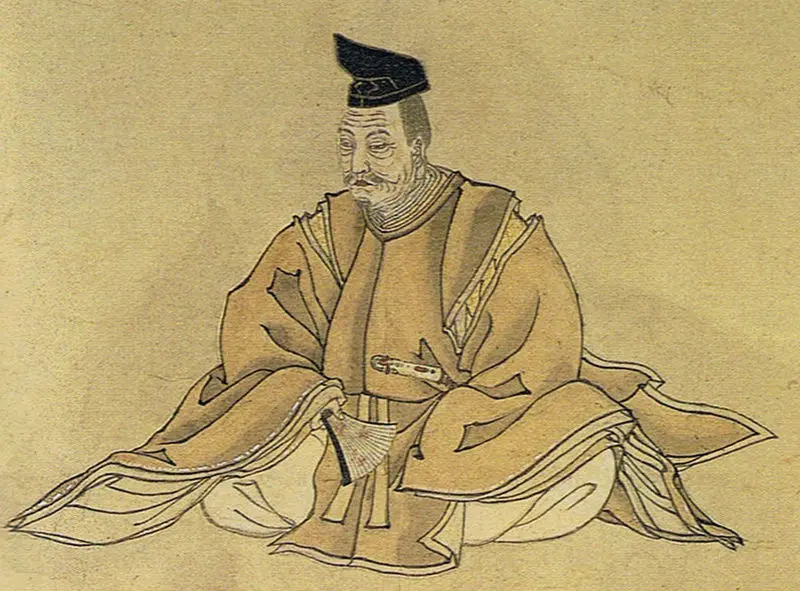
Yoshiie’s efforts to negotiate a peaceful resolution were unsuccessful, prompting him to mobilize his forces to quell the fighting. He received support from Fujiwara no Kiyohira, a figure of considerable influence in the region and a member of the Ōshū Fujiwara clan. Despite his best efforts, the conflict escalated, resulting in the deaths of Kiyohara no Iehira and Kiyohara no Narihira.
The Battles of Gosannen War
Numa Stockade (Winter of 1086)
The first major setback for Minamoto no Yoshiie occurred at the Numa Stockade. Despite a large assembled force, the harsh winter conditions led to an unsuccessful siege. Yoshiie’s younger brother, Yoshimitsu, joined later, reinforcing his army for future battles.

Siege of Kanezawa Stockade (1087-1089)
After the difficulties at Numa, Yoshiie laid a protracted siege on the Kanezawa stockade, where Iehira and Takehira had fortified themselves. During this siege, Yoshiie notably overcame an ambush by observing a flock of birds in flight, a tactic he learned from ancient Chinese military texts. This event underscored the growing sophistication of samurai military strategy.
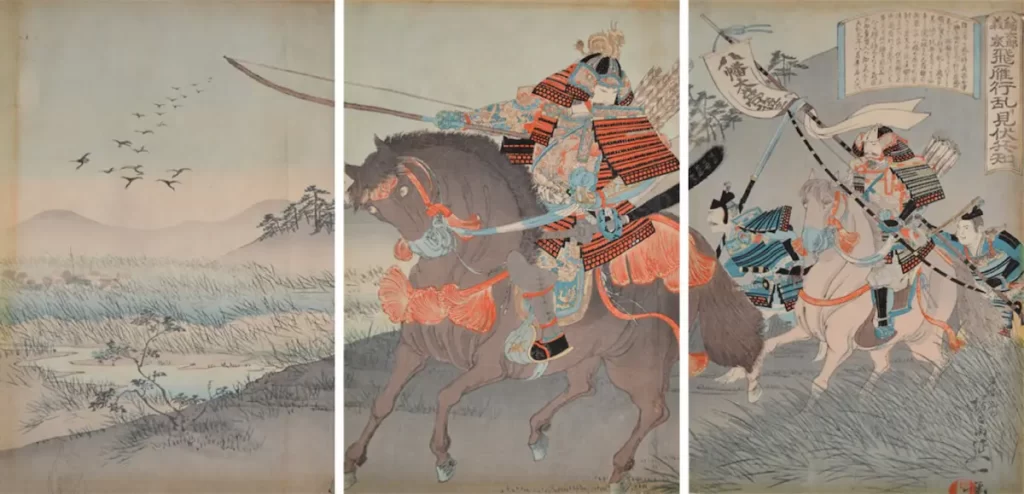
As the siege transited from autumn to winter, starving women and children began to surrender. Initially, Yoshiie intended to spare them but then ordered their execution to conserve food supplies for the army. This led to no further surrenders from within the fort.
As their food ran out, Iehira and Takehira set fire to the stockade and attempted to flee, but both were captured and executed, concluding the battle on November 14, 1087. This victory, though costly, highlighted the resilience and skill of Yoshiie and his samurai.
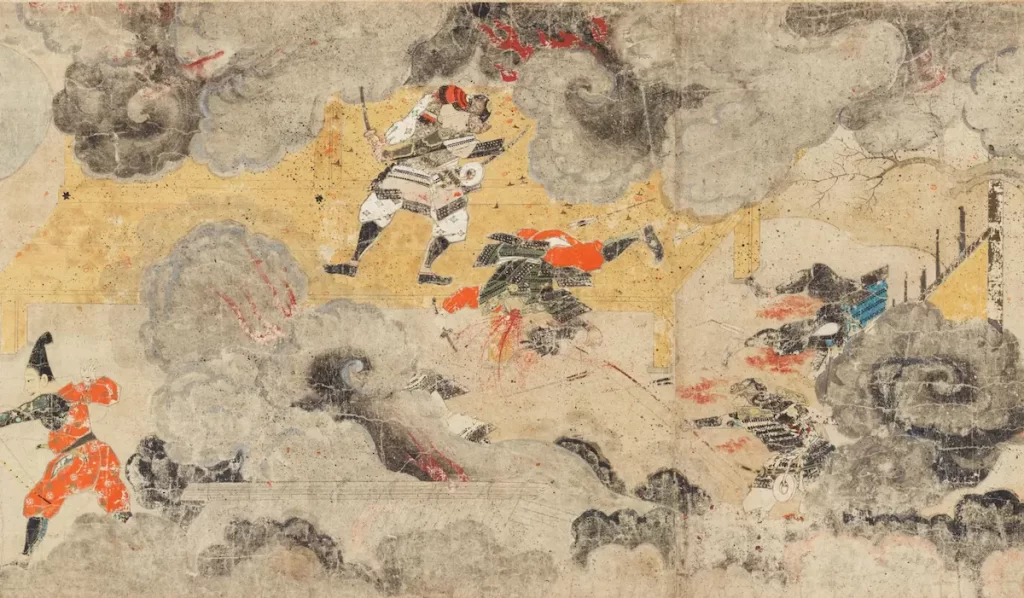
Aftermath of Gosannen War
Detriment to Minamoto no Yoshiie’s Position
Despite his military successes, Yoshiie found himself in a precarious position post-war.
The imperial court had previously denied his request for an official Shogunal commission for the war. Consequently, his campaign, though victorious, was not officially sanctioned. This lack of recognition had profound implications.
Yoshiie, having expended personal resources and effort, received no formal reward or acknowledgment from the court. In a striking act of disillusionment, he discarded the heads of the defeated rebels, a symbolic rejection of the court’s apathy.
Furthermore, the court dismissed him as governor of Mutsu in 1088, and he was obliged to compensate his troops from his own resources.
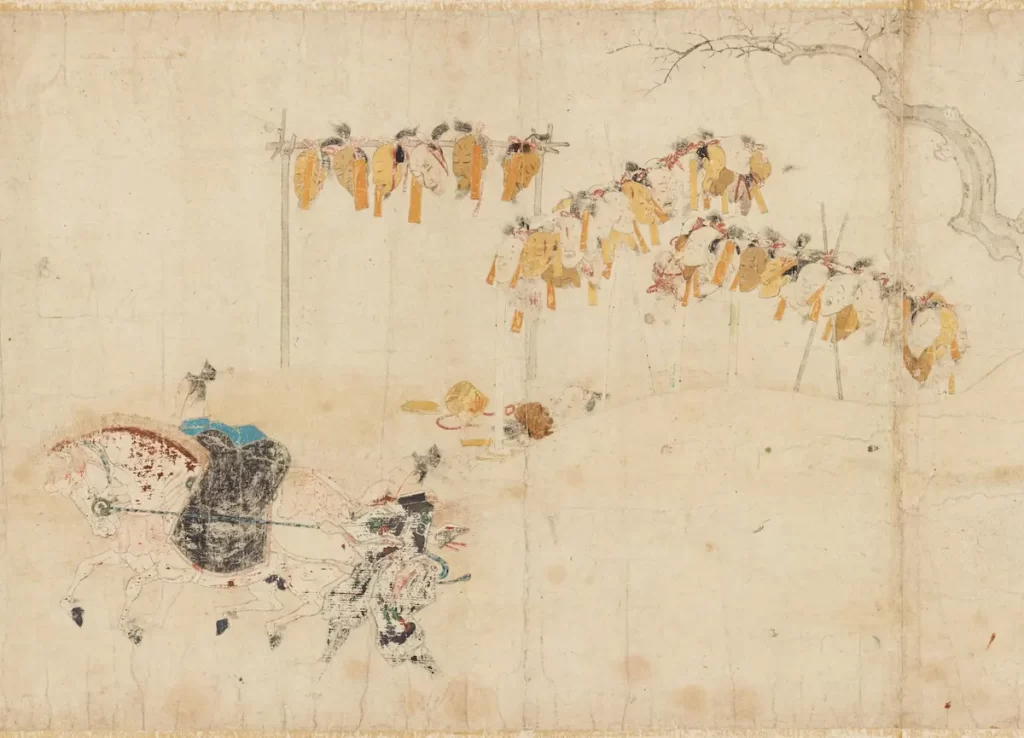
Fujiwara no Kiyohira’s Ascendancy
In contrast to Yoshiie’s fortunes, Fujiwara no Kiyohira emerged as a major beneficiary of the conflict.
As the sole survivor of the Abe and Kiyohara families, Kiyohira gained control of their extensive lands in Mutsu and Dewa provinces. He was appointed Chinjufu shōgun, signifying his elevated status.
Cultural and Political Implications
The aftermath of the Gosannen War reflected the growing influence of the samurai class. Yoshiie’s victories, though not formally recognized, enhanced the prestige of the Minamoto clan among eastern warriors.
The conflict highlighted the rising importance of private forces and alliances over imperial authority in military campaigns. The war also underscored the feudal aspects of these conflicts, where private armies played a crucial role.
Long-term Legacy
The Gosannen War left a lasting impact on the region. It intensified the militarization of the Tōhoku region and set the stage for future conflicts involving prominent samurai families.
The war also contributed to the legend and ethos of the samurai class, with tales of bravery and strategy from the conflict being passed down through generations, influencing the cultural narrative of the samurai in Japanese history.
Frequently Asked Questions
What were the causes of the Later Three Years’ War?
The Later Three Years’ War was primarily caused by internal disputes within the Kiyohara clan, a prominent family in the Tōhoku region of Japan. This family feud was exacerbated by the broader struggle for power among various warrior clans during the Heian Period. Additionally, the desire for control over territories and influence in the region contributed to the outbreak of the conflict.
Who were the main parties involved in the Later Three Years’ War?
The key parties were members of the Kiyohara clan and Minamoto no Yoshiie, who intervened in the conflict. Fujiwara no Kiyohira also played a significant role.
What was the outcome and impact of the Later Three Years’ War?
The war ended with Minamoto no Yoshiie’s military success but without formal recognition from the court. It led to Fujiwara no Kiyohira’s rise in power and highlighted the growing influence of the samurai class, signaling a shift towards feudal Japan.
Further Readings
- The Samurai: A Military History by Stephen Turnbull
- The Cambridge History of Japan: Volume 2 (Heian Japan)
- A Concise History of Japan by Brett L. Walker

